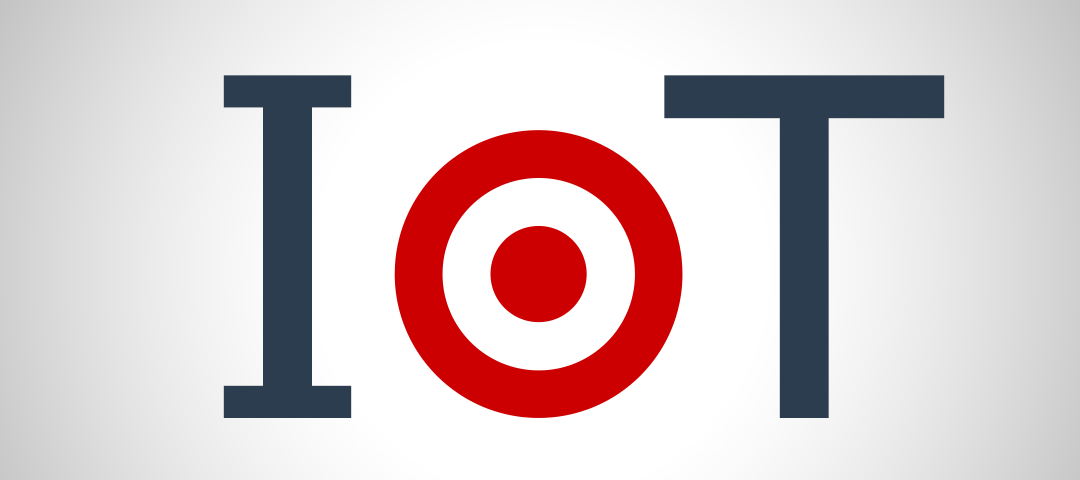As a group of Silicon Valley CTOs, we often get approached by enterprises looking to innovate. The conversation begins with a discussion around various emerging technologies coming from Silicon Valley with a goal of brainstorming which technologies pose the biggest threat or opportunity to the company. Eventually, a challenge emerges for the enterprise which is in how to properly incorporate the technology trend into the various business units inside the company. Technology in it of itself is not a cure all to innovation. Technology needs to map to business objectives which in turn are derived from the changing market landscape. In this post, we highlight one impressive example of corporate innovation done right: namely Target’s efforts in leveraging its mid-market consumer brand to take advantage of the trends happening in the Internet of Things (IoT) technology space.
The IoT industry has the promise of bringing about a new level of efficiency and productivity to consumer electronics. “Smart devices” have the possibility of increasing electricity efficiency by 10% – 30%. Furthermore, connected devices bring new utility to consumers by allowing manual operations to be automated in areas such as cleaning, food preparation and garden care. With these increases in efficiency and productivity, there will be an enormous one time spending increase by consumers worldwide. Juniper Research predicts that this will reach $100 billion by 2020. When the time and energy expenses make it more costly to keep your current home appliance in place of a smart device, we can expect to see a massive wave of consumer spending.
One of the biggest hurdles in the IoT industry is the fragmentation that exists in both suppliers of devices and the technology frameworks that allow devices to communicate with each other. New brands are emerging from crowdfunding campaigns that promise the connected device efficiency gains, but lack the brand awareness to instill trust in consumers. Similarly, the platform technology standards are still being formed and there is yet to be a single prevailing standard for device communication. This leaves consumers with the confusing task of doing their diligence in order to figure out which devices are trustworthy and how to properly configure a suite of connected devices in order to get the promised efficiency gains. Unfortunately, consumers are notoriously lazy; what is needed is a packaged offering that provides all of the benefits of connected devices without the uncertainty.
Enter Target, a mid-market retailer that has been struggling to find relevancy in the world of Amazon cutting away at online sales and Walmart taking the low end of big-box retail. The core value proposition of Target is its trusted brand that attracts mid-market consumers who likes the think of themselves as smart shoppers, attracted to Target’s trendy store items at reasonable prices.
In a bold move of innovation, Target has launched a “Smart Home” concept store in its San Francisco outlet. Visitors can see a variety of exhibits, centered around the different living spaces that most consumers would relate to. On display you can see a bedroom outfitted with a Jawbone that sets an alarm clock, a Nest managing the thermostat, automatic locking of outside doors via August, and automatic light controls via Hue. There are similar exhibits for the living room, kitchen, bathroom, etc. In each exhibit, there is an interactive display showing the productivity gains for the consumer. See pictures below.

The significance behind the concept store is in its execution. Consumers can see clear value proposition from the various smart device configurations. The products all work in tandem and work flawlessly. The IoT space is still quite nascent, and Target’s concept store provides a great educational service to consumers who can see firsthand the power of connected devices. With this approach, Target has the possibility of eating into indirect competitors like Best Buy to become a key retail player in the upcoming $100 billion IoT market.
There will be other large retailers riding this trend. Apple will pursue the high end of the market by offering a suite of connected devices that all work on its proprietary closed ecosystem. As IoT devices and platforms mature, Walmart and Amazon will fiercely race to the bottom of price to capture the low end of the market. But Target has the opportunity to capture the upcoming mid-market’s massive IoT spending spree and its smart home concept store is a great first step.
One piece of advice to the Target team: do not be detoured if infatuation does not immediately turn into sales. Remember, you are in San Francisco where an overwhelming proportion of people lack price discrimination and have bought into overpriced consumer electronics. That isn’t your target market nor should it be. Keep experimenting with the business model and expand into other geographies at your earliest opportunity. At any rate, kudos to the job well done.
